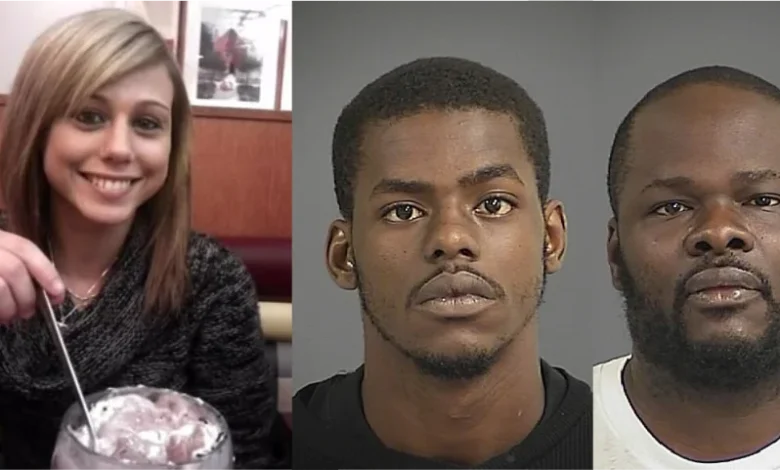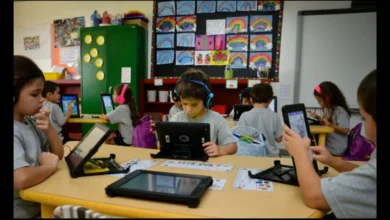What is the “White Girl Black Boyfriend Violence Meme”?

The phrase “white girl black boyfriend violence meme” refers broadly to memes, jokes, or viral images/videos on social media that depict or claim conflict, aggression, or violence between a white female and her Black male partner. Often by implication or through exaggeration, these memes portray the white woman as being victimized or manipulated, emotionally or physically, by her Black boyfriend—or else dramatize the relationship as dysfunctional in a racialized way.
These memes tend to:
-
Lean into stereotypes about Black men: hyper-aggression, dominance, violence.
-
Lean into stereotypes about white women: victimhood, innocence, being “led astray,” etc.
-
Use shock, humor, exaggeration: often with sensational language (“he beats her,” etc.), sometimes claiming video/audio “proof” even if dubious.
-
Spread quickly because of emotional reactions: outrage, moral condemnation, curiosity.
Many times, the content is false, exaggerated, or taken out of context—but because of how it aligns with existing stereotypes or societal fears, it feels “believable” to many.
Origins & Spread: How This Meme Became Popular
Understanding how and why this meme spread involves looking at both history and modern social media dynamics.
-
Historical Roots of Stereotypes
Racialized depictions of relationships between white women and Black men have long been part of racist propaganda and cultural taboos, especially in societies with histories of slavery, segregation, and anti-miscegenation laws. White womanhood has often been idealized and protected in racially charged ways, and stories about white women being threatened (or allegedly threatened) by Black men have historically been used to justify violence, legal repression, and social control. -
Modern Social Media Amplification
-
Platforms like Facebook, Instagram, TikTok, Twitter provide easy distribution channels.
-
People are drawn to sensational claims or content confirming their biases (confirmation bias).
-
Meme culture thrives on brevity, shock, humor; these stories or images often get stripped of nuance.
-
Many such memes are re-shared without fact-checking.
-
-
Viral Events and “Proof”
Often a video, a snippet, or a second-hand account (sometimes unverified) becomes the seed. Once people believe it, they share, comment, meme-ify. The more dramatic the claim, the more likely it spreads. Sometimes real incidents are twisted, edited, or decontextualized to match the meme narrative. -
Participation & Remix Culture
Memes are often remixed, re-captioned, reinterpreted. Someone might see a clip, overlay text like “When your white girlfriend says she’s leaving you … but she stays for the drama,” or something stereotypical. These do not always acknowledge truth, but they catch attention.
Why It Resonates and Why It’s Harmful
These memes persist because they tap into deep psychological, social, and cultural dynamics. But with that resonance comes harmful consequences.
Why People Relate or Share Them
-
Existing prejudices: Many already hold stereotypes (about Black men, white women, interracial relationships) so these memes serve as “validation.”
-
Entertainment / Shock Value: Even people who don’t believe it might share for the outrage, humor, or “did you see this?” factor.
-
Identity & group dynamics: Those who feel threatened by changing racial/sexual norms might use the meme to reassert “safe” boundaries.
Harmful Effects
-
Reinforces racial stereotypes: The idea that Black men are violent, aggressive, or dangerous is age-old racism. This frames interracial relationships in a mistrustful way.
-
Victimizes white women while ignoring mutuality or context: It centers white femininity and “innocence,” often invisibilizing their agency and sometimes their own problematic behavior.
-
Stigmatizes real relationships: Couples who are interracial may face suspicion, judgment, or prejudice because of memes that suggest danger or betrayal.
-
Misinformation and emotional manipulation: False or exaggerated stories feed fear, bias, and can even lead to real-world consequences—harassment, legal trouble, moral panic.
Examples & Evolution: Meme Variants
Here are some of the forms this meme takes, and how it changes over time:
-
Text-based memes or posts that claim “white girl found out black boyfriend doing X, did Y.” Usually dramatic.
-
Videos (real or staged) sometimes shared as evidence. May be edited.
-
Image macros / comic strips where white girl is portrayed reacting fearfully, angrily, or sadly; often with exaggerated dialogue.
-
Remixes: A video from a different context is repurposed (audio swapped, text added) so it fits the stereotype narrative.
As social norms shift, versions may also lean into “calling out” the meme itself, or offering counter-stories (e.g. happy interracial relationship stories), or satirizing the meme. But the core dynamic—white woman + Black male partner + conflict/violence—remains.
How It Plays into Broader Racial and Gender Politics
These memes are not just funny or harmless jokes; they reflect and feed into larger societal dynamics.
-
Historical racism: As mentioned, in many countries there has been legal, cultural, even violent suppression around interracial relationships, especially with white women and Black men. These memes tap into that history.
-
Gendered power dynamics: The “white girl” is often cast as powerless, naive, or betrayed, which plays into tropes of white feminine purity needing protection. The Black boyfriend is often cast as the aggressor. This parallels stereotypes of masculinity and racialized male aggression.
-
Media framing & “newsworthiness”: When incidents involving interracial couples do become news, they are more likely to be framed in a sensationalist way, especially if there’s violence. These stories feed meme culture.
-
Moral panic and racial fear: Part of the spread is that these memes evoke fear—fear of losing social control, fear of “others,” fear of breakdown of “traditional” norms.
How to Identify False or Manipulated Content & Resist Harm
Since many of these memes are exaggerated or false, here are strategies to evaluate them, and to reduce harm.
| Strategy | What to Do |
|---|---|
| Source check | Who posted it first? Is it from a credible account or outlet? Is there verifiable information (police report, news article)? |
| Context check | Is the video/image excerpted? Altered? Does it show the beginning, middle, end? What’s the setting? Is there metadata (date, location)? |
| Cross-verification | Search multiple sources. Use fact-checking sites. See if local news mentions it. |
| Be skeptical of sensational claims | If the story claims something extreme (violent beats, malicious betrayal), but lacks evidence, approach with caution. |
| Think about motive | Who benefits by spreading the meme? What stereotypes or agendas does it serve? |
What Can Be Done: Best Practices & Social Solutions
To reduce the spread and harm of these memes, both individuals and platforms can take steps.
-
Media literacy education
Teach people (especially younger users) to critically examine memes, to ask: Is this verified? Am I playing into stereotypes? -
Platform moderation & fact-checking
Social media companies can be more proactive in labeling misleading content, removing false claims, or placing warnings. Fact-check partnerships help. -
Promoting counter-narratives
More stories/showcases of healthy interracial relationships; more content that dismantles stereotypes instead of reinforcing them. -
Encouraging responsible sharing
Before sharing or reacting viscerally, pause: check if source is reliable; consider the impact on real people; consider whether you’re spreading fear. -
Policy interventions
Possibly laws or rules to discourage defamation, misinformation; but must be balanced with free speech.
Conclusion
The “white girl black boyfriend violence meme” is a trope built out of historic stereotypes, sensationalism, and the dynamics of modern social media. Though some memes may be based on real events, many do not, yet they gain traction because they feel emotionally resonant and confirm biases that people already have. While memes might seem trivial, the harm is real: reinforcing racism, straining relationships, misinforming people, and contributing to fear and prejudice.
By learning to critically analyze such content, demanding accountability in media and platforms, and promoting more truthful and inclusive narratives, we can weaken the power of these harmful memes.




